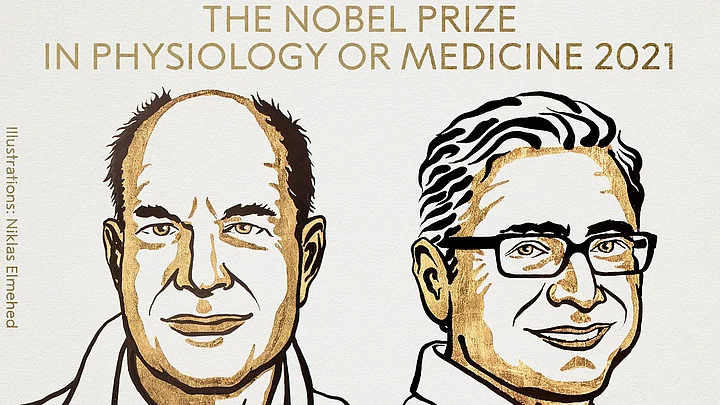The prestigious Nobel Prize for the field of physiology or medicine was awarded jointly to David Julius and Ardem Patapoutian “for their discoveries of receptors for temperature and touch,” on Monday, 4 October.
The seminal discoveries by this year’s Nobel Prize laureates in physiology or medicine have explained how heat, cold and touch initiate signals in our nervous system, leading to our perception of temperature and pressure around us.
A statement by the the Nobel Assembly at Karolinska Institutet said, 'The laureates identified critical missing links in our understanding of the complex interplay between our senses and the environment.'
The Breakthroughs
The statement read further, 'While the mechanisms for temperature sensation were unfolding, it remained unclear how mechanical stimuli could be converted into our senses of touch and pressure.'
While mechanical sensors had previously been identified in bacteria, the mechanisms responsible for manifesting touch in vertebrates remained unknown to science.
It was Ardem Patapoutian and his collaborators' breakthrough identification of a single gene – whose silencing rendered cells insensitive to poking with a micropipette – which unravelled this answer.
Patapoutian was working Scripps Research in La Jolla, California, USA when he made the breakthrough discovery.
Meanwhile, it was David Julius' utilisation of capsaicin – a pungent compound found in chilli peppers – to identify a sensor in the nerve endings of the skin that responds to heat which earned him the reputed prize.
More About the Nobel Prize Laureates
David Julius, born in 1955 in New York, received a PhD from University of California, Berkeley and was a postdoctoral fellow at Columbia University, in New York.
In 1989, he was called to the University of California, San Francisco, where he is now a professor
Fleeing the war in Beirut in his youth, Ardem Patapoutian reached Los Angeles and went on to do a PhD from California Institute of Technology, Pasadena in 1996.
Born in 1967, the scientist went on to become a postdoctoral fellow at the University of California, San Francisco. Since 2000, he is a scientist at Scripps Research, La Jolla, California where he is now also Professor.
(At The Quint, we question everything. Play an active role in shaping our journalism by becoming a member today.)
